20 Restaurant Red Flags You Need to Know Before Dining Out

Dining out is a luxury for most of us. With busy lives and ongoing inflation, going out to dinner is a treat. So it’s important to know a spot is serving good quality food before you choose to splurge on a night out. While reading online reviews about specific restaurants is one way to do this, paying attention to the little red flags the menus can give away is another.
As people return to restaurants more and more, figuring out whether a spot is worth it is important. Several restaurant chains are reporting a decline in delivery and a return to in-person dining. Texas Roadhouse, Applebees, and Chili’s are all seeing customers returning to their locations, so it is in the best interest of a restaurant to offer good value for what it serves.
“A lot of it does come down to, if a consumer is willing to spend a little bit more money and a little bit more of their time to go to a casual-dining restaurant, you have to either win them with food quality … or give them some type of experience,” according to Kevin Schimpf, director of industry research and insights for date site Technomic.
The same goes for independent spots, but unless a restaurant is a well-known part of the community, it can be hard to tell if it’s worth your time and money. We asked chefs across the country what red flags they look for before trying a steakhouse, Italian restaurant, seafood or sushi spot, sandwich shop, or a burger joint. Here are the things that make them reconsider their meal at a restaurant.
The staff can’t answer the important questions

The staff of a restaurant that is well-run will be able to answer basic questions about where the food is sourced from and what’s fresh. At a steakhouse, for instance, the server should know where the meat is coming from. At a seafood or sushi restaurant, staff should be able to tell you when the fish came in.
“When the server can’t explain where the beef they are buying is coming from, what grade it is, or they don’t have knowledge of the different cuts on the menu, that’s one of the biggest red flags there is,” said Shawn Matijevich, lead chef of online culinary arts & food operations at the Institute of Culinary Education and former executive chef of BLT Prime, “Since high-quality meat isn’t always the most accessible, businesses will usually take more pride and advertise how their top-notch menu items set them apart from the competition.”
The same goes for seafood, where the waters it is sourced from and when it was caught are paramount. “You should look for the origin of the fish,” according to Chef Erik Slater of Seward Brewery. “For example, seafood from Alaska is guaranteed to be wild and sustainable, and its cold, glacier-fed waters produce some of the purest, high-quality seafood in the world; expertly handled for superior taste and quality. Plus, Alaska fishermen harvest wild seafood at the peak of freshness and freeze it within hours, oftentimes right on the boat.”
It’s not busy
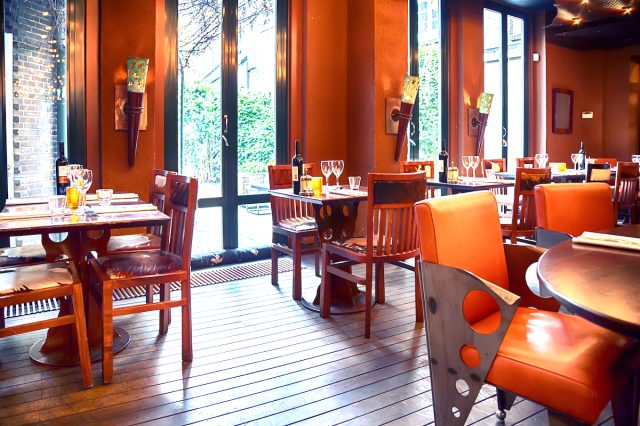
It doesn’t matter if you are headed to a steakhouse, Italian restaurant, sandwich shop, barbecue spot, or sushi restaurant, a busy restaurant is a good sign. Sure, you don’t want to wait hours for a table or a simple sandwich, but you also don’t want to pick a spot that doesn’t have a lot of customer turnover. For one, a crowd is the best endorsement for the restaurant’s quality, and for another, a restaurant that doesn’t move a lot of food is likely to compromise on its freshness. This is true of almost every restaurant, so consider yourself warned.
Iverson Guo, the chef and owner of Karma Asian Fusion, said, “If I walk into a sushi restaurant and do not see a lot of customers during a time that should typically be busy, I’m skeptical—even more skeptical when I see a lot of sushi in display cases. Not fresh!”
The origin of the seafood is a mystery
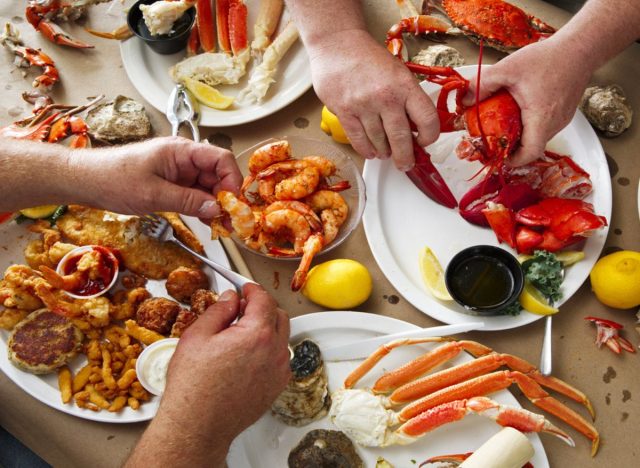
Seafood restaurants located on the coasts are important, but equally important are the spots where they get their fish and other seafood. “Look for words like “native,” “local,” “dayboat,” “seasonal,” and “daily specials,”” said Dell Leandro, culinary director of New England-based seafood restaurant Summer Shack. “These descriptions are very common on menus of restaurants that shop from the local fisherman.”
And if a seafood spot or sushi restaurant isn’t near a body of water, find out when the seafood was delivered. “Ask the waiter. It’s a softball question and an especially important one when you’re eating raw catch,” says William Mack, chef and editor at Kitchen Ambition. “Most reputable establishments will get fish delivered every day or two. If the front-of-house staff can tell you where the fish came from and maybe even how it was caught, then you know you’re in good hands.”
The menu is full of gimmicks
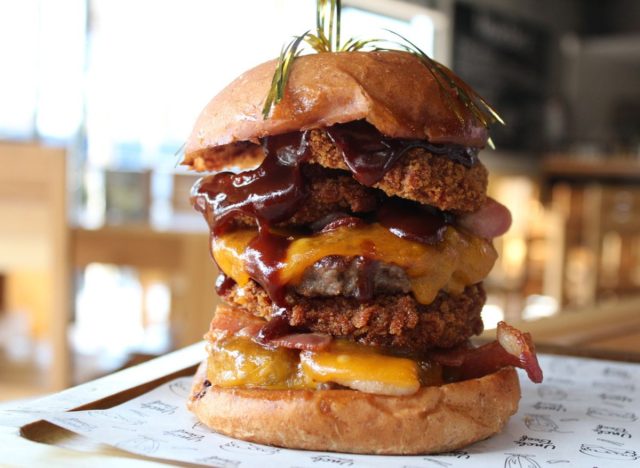
If a menu is full of over-the-top options, the restaurant is likely trying to make up for its lacking food quality.
At a pizzeria, for example, keep an eye out for overloaded pies. “Many pizzerias resort to stuffed crusts or five-meat monstrosities to lure in sales and compensate for their mediocre pizza,” said Gabriel Glasier, former executive chef, restaurateur, and founder of Chef Travel Guide. “Whether it’s the popular pizza of the moment or a hot cheese dipping sauce, these are signals to take your money elsewhere that cares about making quality pies.”
At a burger spot, skip the toppings that seek to disguise the burger. “A red flag for a burger is gimmicky burger options. It might be a Hawaiian burger with pineapple or some abomination with peanut butter on it. When you see it, you’ll know that they are drowning in beef that’s not very good in other toppings. I prefer a burger-flavored burger myself,” said Chef Kam Talebi of The Butcher’s Tale.
“Generally speaking, more is not better when it comes to burger components,” said Kyle Jones the head chef at Craft Wood Fired Catering. “A well-crafted patty served on a quality bun with a few simple toppings will often provide a better experience than an overloaded burger,”
The menu is full of out-of-season ingredients
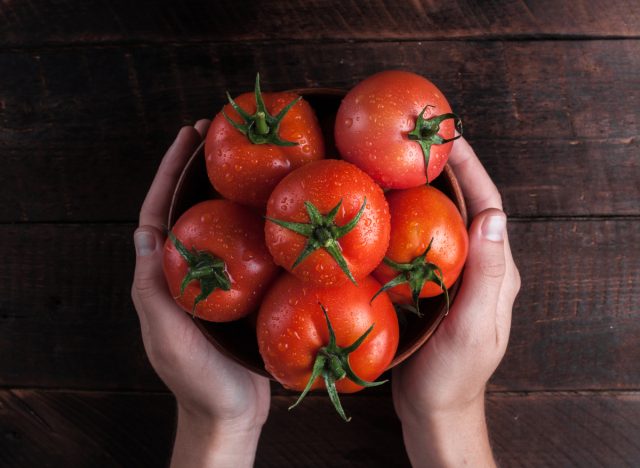
A spot with a ton of out-of-season ingredients on its menu may be a warning. “Even a serious pizza chef can’t make a great pizza without starting with high-quality seasonal ingredients,” said Glasier. The same is true of every restaurant on this list. “If it’s the dead of winter and the menu has fresh tomatoes or bell peppers, it tells you that quality ingredients come second,” he added.
A restaurant says it serves Kobe beef
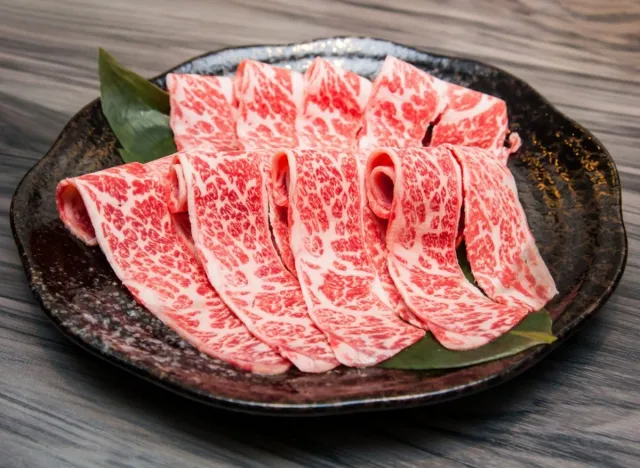
If Kobe is on the menu, the restaurant better be ready to back up this unusual claim. Joe Isidori, Michelin star chef, restaurateur, and cookbook author said that sourcing real Kobe beef from Japan is very difficult. Most of the time, the supposed Kobe beef is actually American Wagyu.
“People will still buy it because Wagyu is awesome!” he says.
If you are willing to pay for the real deal, check out the Kobe Beef Marketing and Distribution Association for certified locations serving it.
Steaks don’t have a USDA grade
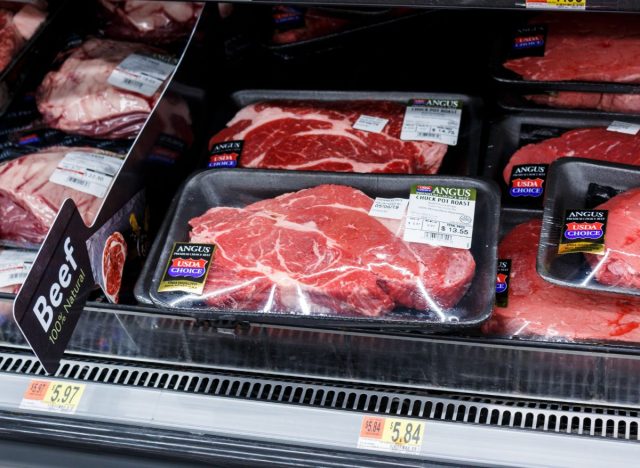
For the best quality look for cuts of beef that are certified by the United States Department of Agriculture (USDA), and Choice and Prime are preferred to Select. Restaurants will use other buzzwords to disguise lower-quality beef.
“If it doesn’t say USDA prime or choice, it isn’t,” said Andre Fuehr, executive chef of Paris Baguette. “Everything else is made up of names. Angus beef is just a black cow that’s not anything different.”
But the grade of the steak can’t tell the whole story. Again, find out where the animal came from for the best quality. For that, you’re going to have to research the restaurant or rely on servers.
The prices seem low
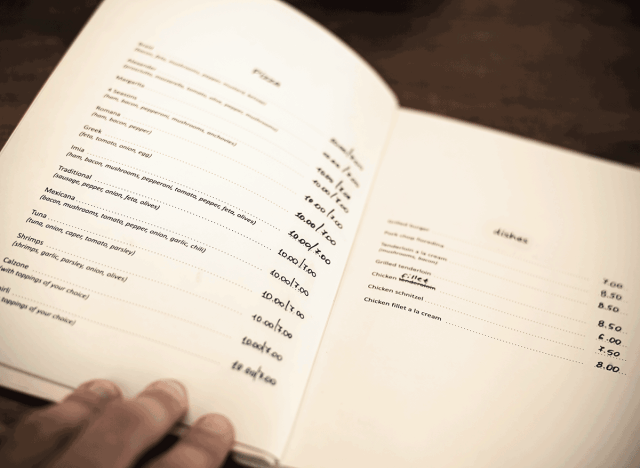
If something is too good to be true, it probably is. This is especially true at a restaurant that is selling Kobe at a reduced price. “If you aren’t spending several hundred dollars for that steak, you’re definitely not getting Kobe beef,” said Fuehr.
Everything is covered in sauces
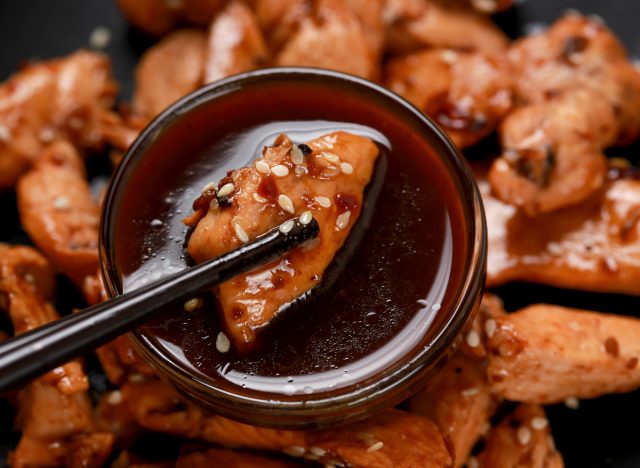
While interesting menu items are great, the freshest meats and seafood do not need to be covered up with heavy sauces or wild preparations. “Remember that simple is good,” said Leandro. “If the seafood is fresh, it would be good on its own, it doesn’t need heavy flavors and it should be the star of the plate.”
Also, skip the overly sweet sauces. “The biggest one is teriyaki sauce,” said restaurant owner and MyBartender founder Paul Kushner. “While other menu items may be okay or even great, if a non-Japanese menu has a steak covered in a sweet teriyaki sauce I’d get skeptical. Typically, this option is reserved for less flavorful meats and for steaks that need to hide behind overcooking. Either the meat isn’t aged enough or the cut is subpar.”
Everything is marinated or bacon-wrapped
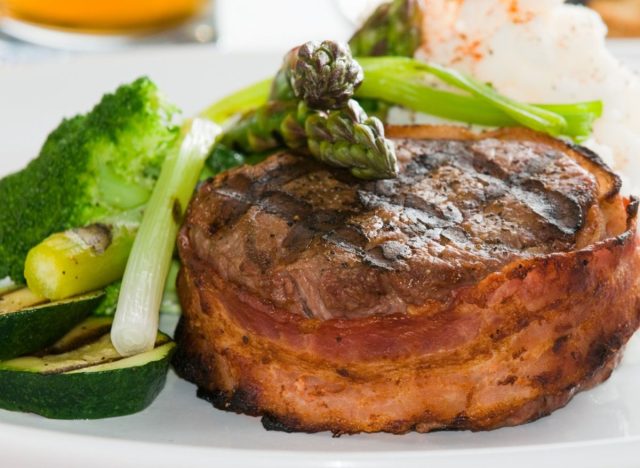
Like heavy sauces, marinades and bacon-wrapped items can be a cover-up for sub-par quality. “I am not a fan of steakhouses that do too much to their steaks, as in marinades, too many seasonings, or anything that is going to take away from the flavor of the steak,” said Sean Ferraro, the chef and owner of Madison Avenue Pizza in Florida. “A good steak doesn’t need a ton of seasoning and it definitely doesn’t need to be marinated. If you’re over seasoning it or adding too many extra flavors, it comes across to me as you’re covering up for poor food quality.”
Also, skip anything bacon wrapped. “The same rule applies to bacon-wrapped cuts! A great filet mignon doesn’t need bacon on it, and the bacon will be underdone if you eat your steak rare,” added Kushner.
The burgers are not ground in-house
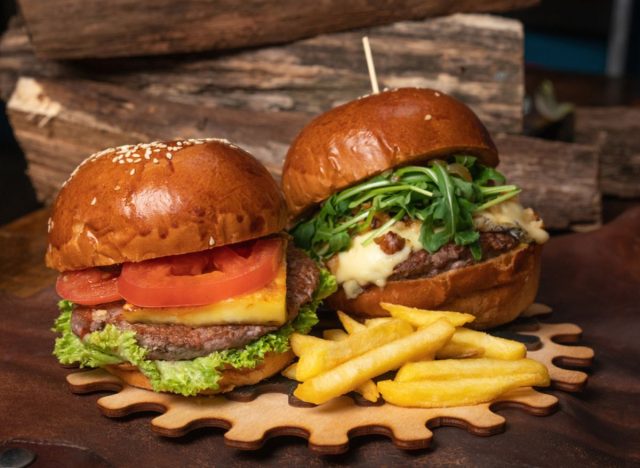
When Chef and Author Allen Bixby orders a restaurant burger he asks one question: Do you grind your own meat? “If it is not ground in-house then I want it cooked through,” he said.
Everything is covered in cheese
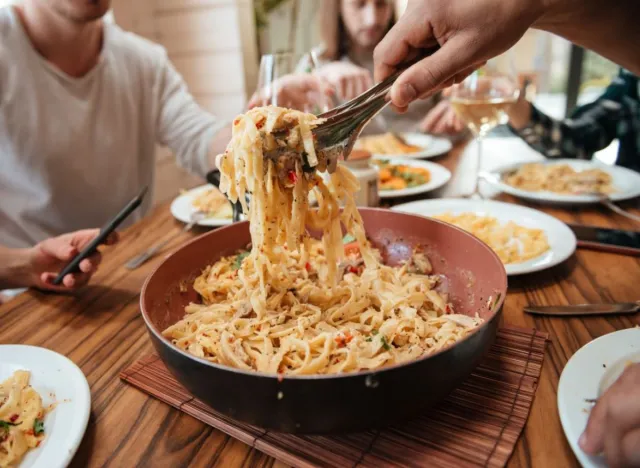
The overuse of heavy sauces is a big sign the restaurant is trying to hide something, and a thick blanket of cheese is another, said Robert St. John, chef and author of An Italian Palate. “Restaurants in Italy use minimal ingredients in minimal ways. True Italian restaurants don’t over-sauce pasta dishes. They also don’t cover everything with cheese.”
The pasta and bread aren’t made in-house
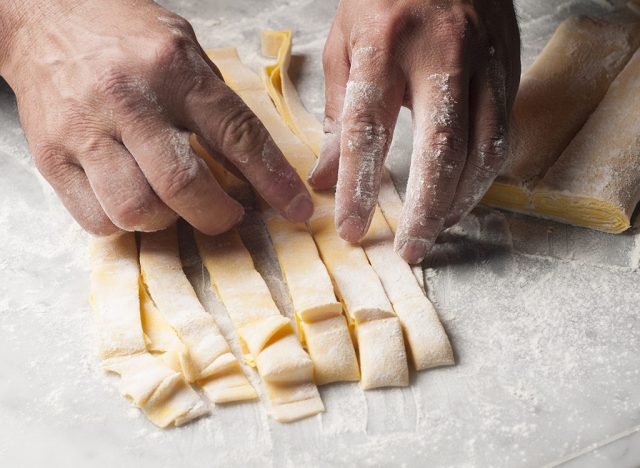
If you’re headed to the Olive Garden you don’t expect handmade pasta, but an elegant Italian restaurant should make this key item from scratch. “As a chef, the number one thing I look for in any restaurant is if items are handmade, in-house,” said Michael DeLone, the executive chef and owner of New Jersey-based Nunzio. Bonus points if the bread and dessert are made at the restaurant too.
Chef Talebi agreed, “Fresh pasta is a completely different experience compared to the dried stuff we are accustomed to.”
Parmesan cheese is not grated to order
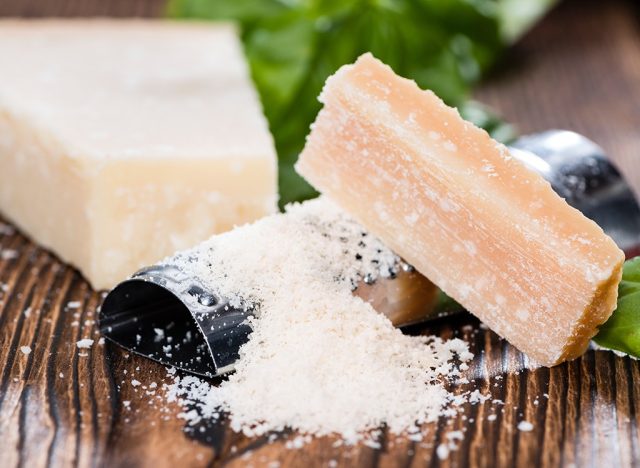
Okay, you wouldn’t expect this at a pizza joint, but at a nice Italian restaurant, it’s a major red flag if the cheese comes to you already grated. Joseph Brenner, the COO of Tuscan Brands, who own Italian restaurants in Boston and New Hampshire, tells us, stating, “Parmesan cheese better not be pre-grated!”
The menu is really long

“When a menu is too long and varied it’s hard to expect that everything is being made the best it can be,” said the Youngs. This is true for any restaurant, but especially so at a sandwich shop. “A well-curated menu on the smaller side is a good sign that the sandwiches were thoughtfully created and have been executed many, many times and those are good indicators that you’ll be getting a quality sandwich.”
Kevin Ronald, chef and founder at Prepared Cooks, agrees. “An extensive menu with unreasonable combinations is a sign to think twice before placing an order. Variety only looks good if every item has a top-notch taste. And experimenting with sandwiches has never been appreciated. Classic combinations always take the forefront.”
The bread is toasted without asking
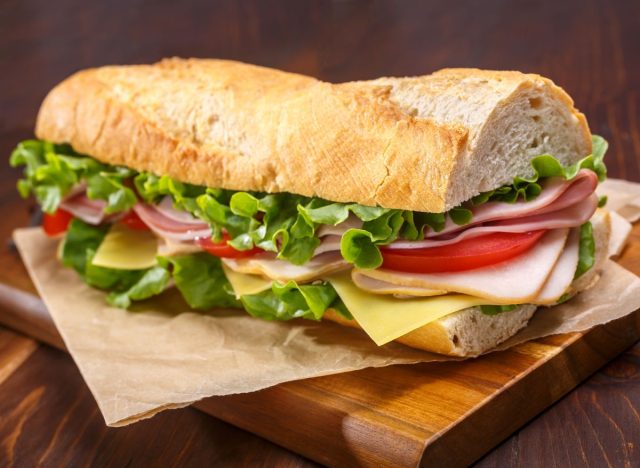
“When a sub shop automatically toasts their sub rolls, there’s a good chance they’re disguising a stale roll,” says Chuck Sillari, owner and chef of Mortadella Head in Massachusetts. “This trick doesn’t really harm anyone—and lots of people like a toasted roll. But if you’re using a nice fresh roll from a local bakery, you don’t mess with it.”
You can’t smell food cooking
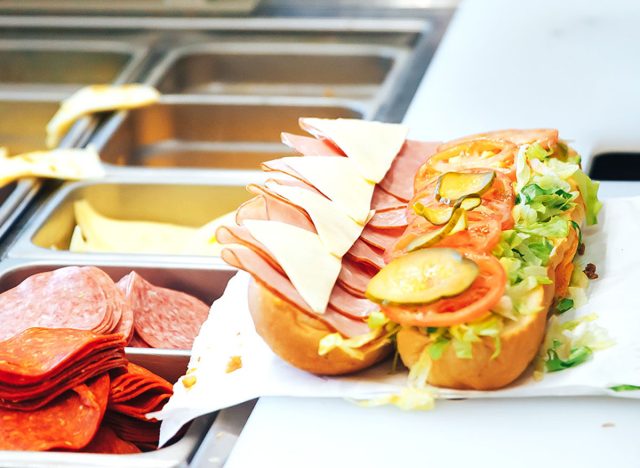
Another red flag is the lack of any smell coming from the kitchen, or the complete absence of a kitchen. “When I walk in I can actually smell real food cooking. It could be a pot of tomato sauce on the stove, meatballs baking in the oven, or onions frying up on the flat top,” said Sillari. “Whatever it is, you need to smell something. It’s a sign that the food is fresh.”
Sushi isn’t made in plain sight
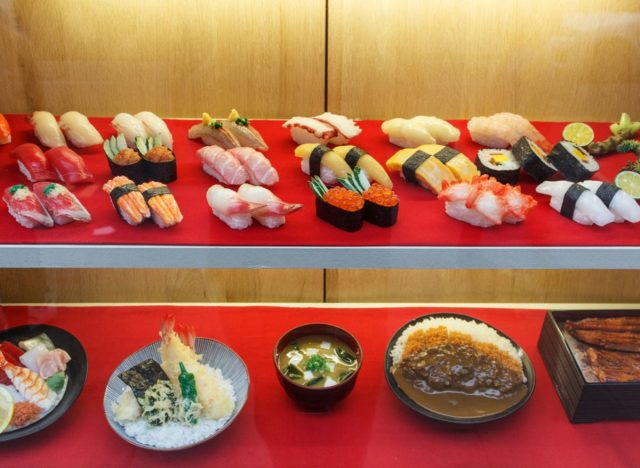
What you see at a sushi spot matters. You want to see your food being made, says Big Night’s Regional Executive Chef Jim Lam. “Avoid sushi that is not made in front of the guests. The fish should be proudly on display to showcase the vibrant colors and the variety of the offerings. Any sushi that you can buy without actually seeing it being prepared is most likely not going to be fresh.”
“When I look for sushi restaurants, I want to see fresh fish—on display,” said Iverson Guo, the chef and owner of Karma Asian Fusion. “But only a portion of fish, not too much—I want to see the proper product rotation to ensure freshness.”
“Another red flag is if the restaurant isn’t clean or the display cage is dirty, this should never be the case, especially when handling raw fish,” said Nana Darkwah, executive sous chef of Ocean Hai at Wyndham Grand Clearwater Beach. “You can tell a lot about a sushi place by the type of fish in the display cage and serving cheap sushi means the product they get in is not good or sushi-grade.”
The guacamole isn’t freshly made
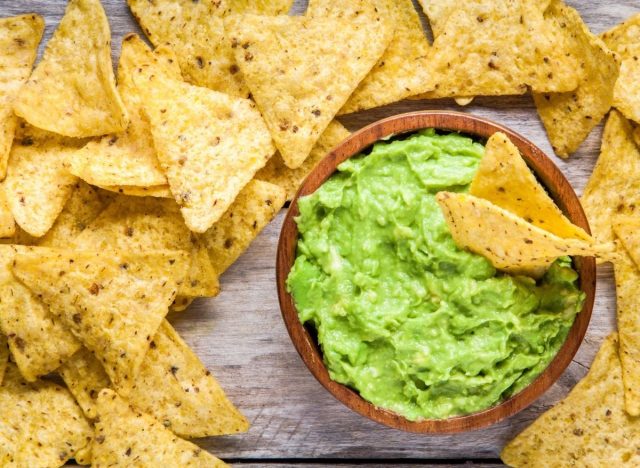
Fresh guacamole is simple. “You can tell if the restaurant is good by the quality and freshness of their guacamole,” said Chef Jason Santos, of Citrus & Salt, and Bar Rescue. “If it is vibrant green and doesn’t have too many extra ingredients so that the flavors stand out on their own, that is always a good sign.”
There’s a variety of pizza dough
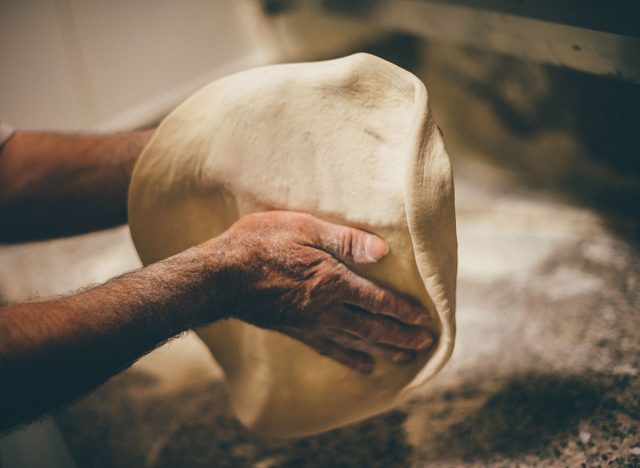
When it comes to house-made pizza dough, more options could equal trouble. “Most pizza places do a poor job of making a single dough that is worth eating,” said Glasier. “They shouldn’t charge extra for a different style of dough when they can’t get their basic option to consistently have the right texture, airiness, and flavor.”
But as with all red flags, there are some exceptions. Glasier calls out Tony’s Coal Fired Pizza as a spot that has perfected offering multiple dough options. “They make every style of pie on a high level, but, in this case, the pizzaiolo is a world champion.”









